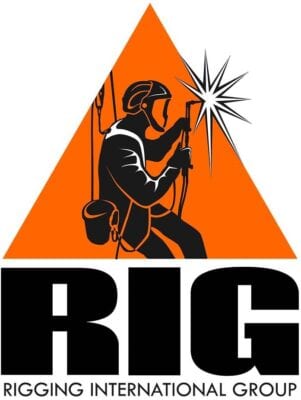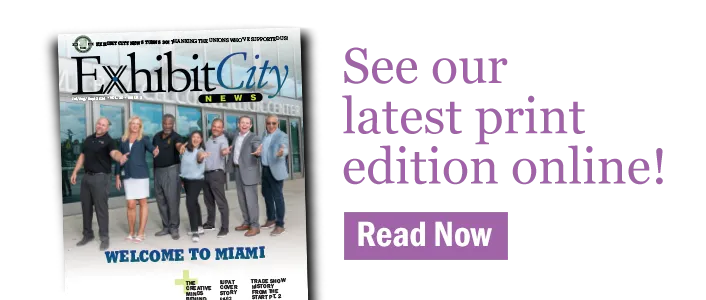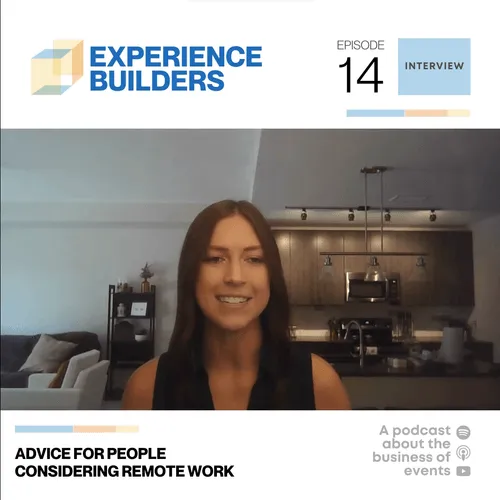The Rigging World by Andrew Fulton
Las Vegas Convention Center, the morning of December 22, 2019. My crew was ready to start rigging the 100-foot-long, 15,000-pound LED wall, but we were looking at something that was “textbook wrong.”
As mentioned in part one of this educational saga last issue, the half-inch Chicago eyebolts intended as the rigging points on the LED wall bumper had been welded to the top of its five 20-foot pieces of 4×6-inch HSS tube steel. The shop had drilled half-inch diameter holes on the topside of the tube (where the eyebolts needed to go), dropped the eyebolts’ threaded shanks into the holes, and welded the bases of the eyebolts to the top of the tube. To add insult to injury, the bolts lacked washers and nuts because the shop fabricators couldn’t reach deep enough into the tube to install finishing hardware to the bottoms of each eyebolt.
But, even if there had been washers and nuts affixed to the eyebolts, they would still have been structurally unusable due to the welding they’d gone through. The high quality of Chicago Hardware’s products is the reason you turn to them in the first place. Chicago Hardware has stringent quality control processes that ensure their dropforged eyebolts meet and exceed the ASME B30.26 requirements. With the integrity of the eyebolts being compromised, we simply could not attach the necessary 1-ton electric chain hoists to them. No way would they be able to lift and support the 15K LED wall! We had a serious problem on our hands.
Part of the problem was our working without any structural design drawings from the engineer. I seriously doubted that the structural engineer designated the eyebolts to be welded to the bumper. My bet was that he intended them to pass through the top and bottom of the HSS 4×6-inch tube steel, and would be finished off with a washer and nut on the underside of the tube. I figured the shop opted to use hardware they had available, deciding to go with two-inch eyebolts and weld them into place rather than purchasing eight-inchers (that would have worked perfectly).
Engineers always prefer a rated hardware connection to a welded connection (something I’ve learned from working with structural engineers, as well as being part owner of a company that provides welding services). Structural welding requires written procedures that must be followed “to the T.” It’s stringent: first, the welder performing the work must possess current qualifications to do the specific type of welding procedures as dictated by the engineer. Then there is a rigorous inspection process using NDT (non-destructive testing) methods, that precedes the welding. And this process is repeated throughout the project as per the engineer. Finally, it’s important to understand that the true integrity of a weld is not known until it goes through a specific NDT inspection process, such as magnetic particle testing. In other words, altering any component of a job through welding is never a “go-to” fix or something we’re cavalier about.
My hope with this second part of our story is that you have a better understanding of why engineers adamantly prefer connectable rated hardware versus hardware that has to be welded. Stick with rated hardware and you’ll always be “textbook right!”
In the next issue, the last installment will conclude this eyebolt saga (how the heck does this LED wall bumper get hung?) Until next time, then, please remember: when you rig safe, you rig right, you rig for success!
 Andrew Fulton is dir. of rigging/part owner of Rigging International Group, a Las Vegas-based rope access company that provides rope access training, rigging, welding, NDT inspection and highly-skilled technicians who specialize in challenging work at height projects for various industries. Currently, he is the lead production rigger at UNLV’s Thomas & Mack Center and manages projects for the Las Vegas PRG office. He is available for consultation and training and can be reached at andrew@rigintlgrp.com.
Andrew Fulton is dir. of rigging/part owner of Rigging International Group, a Las Vegas-based rope access company that provides rope access training, rigging, welding, NDT inspection and highly-skilled technicians who specialize in challenging work at height projects for various industries. Currently, he is the lead production rigger at UNLV’s Thomas & Mack Center and manages projects for the Las Vegas PRG office. He is available for consultation and training and can be reached at andrew@rigintlgrp.com.


























